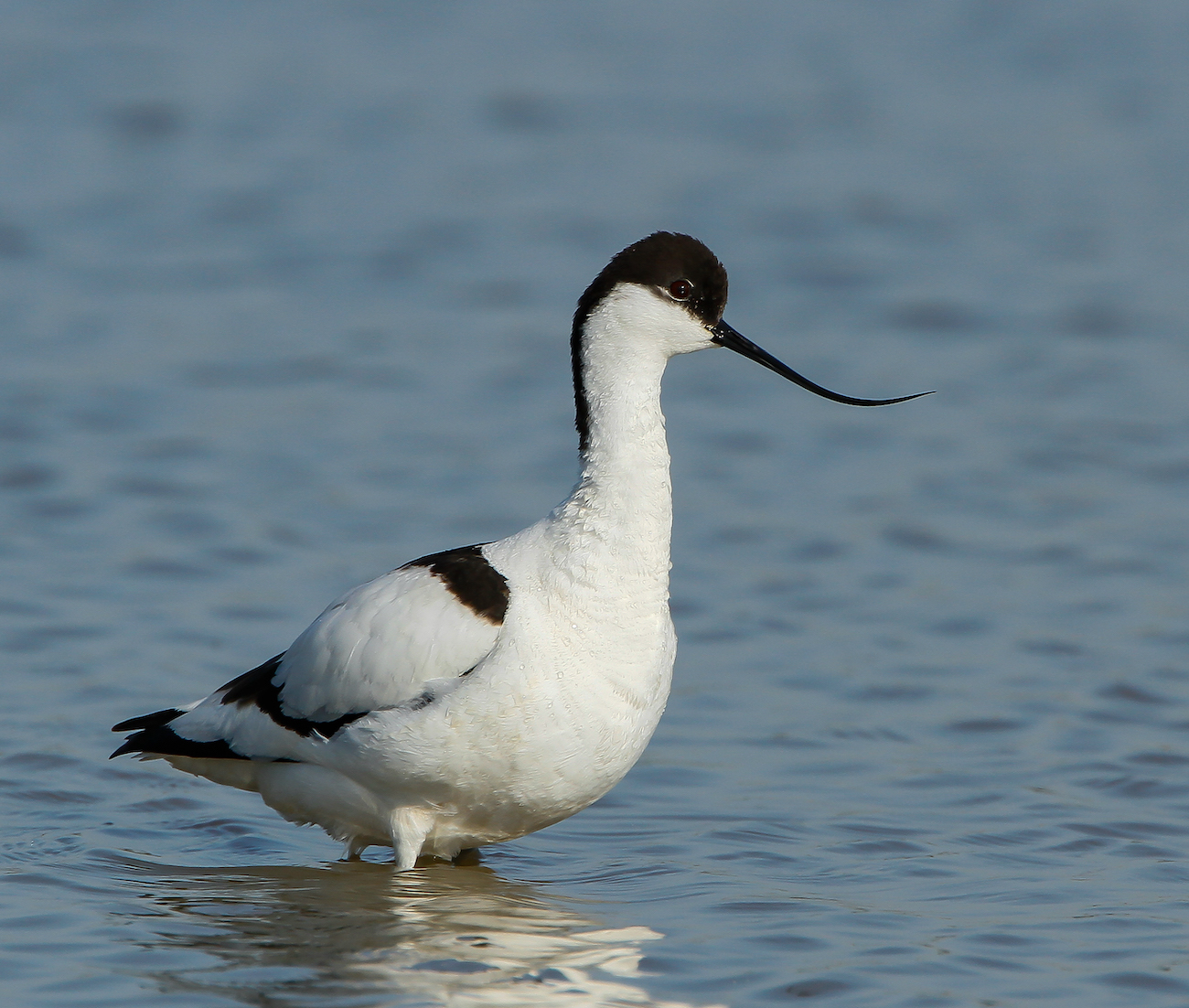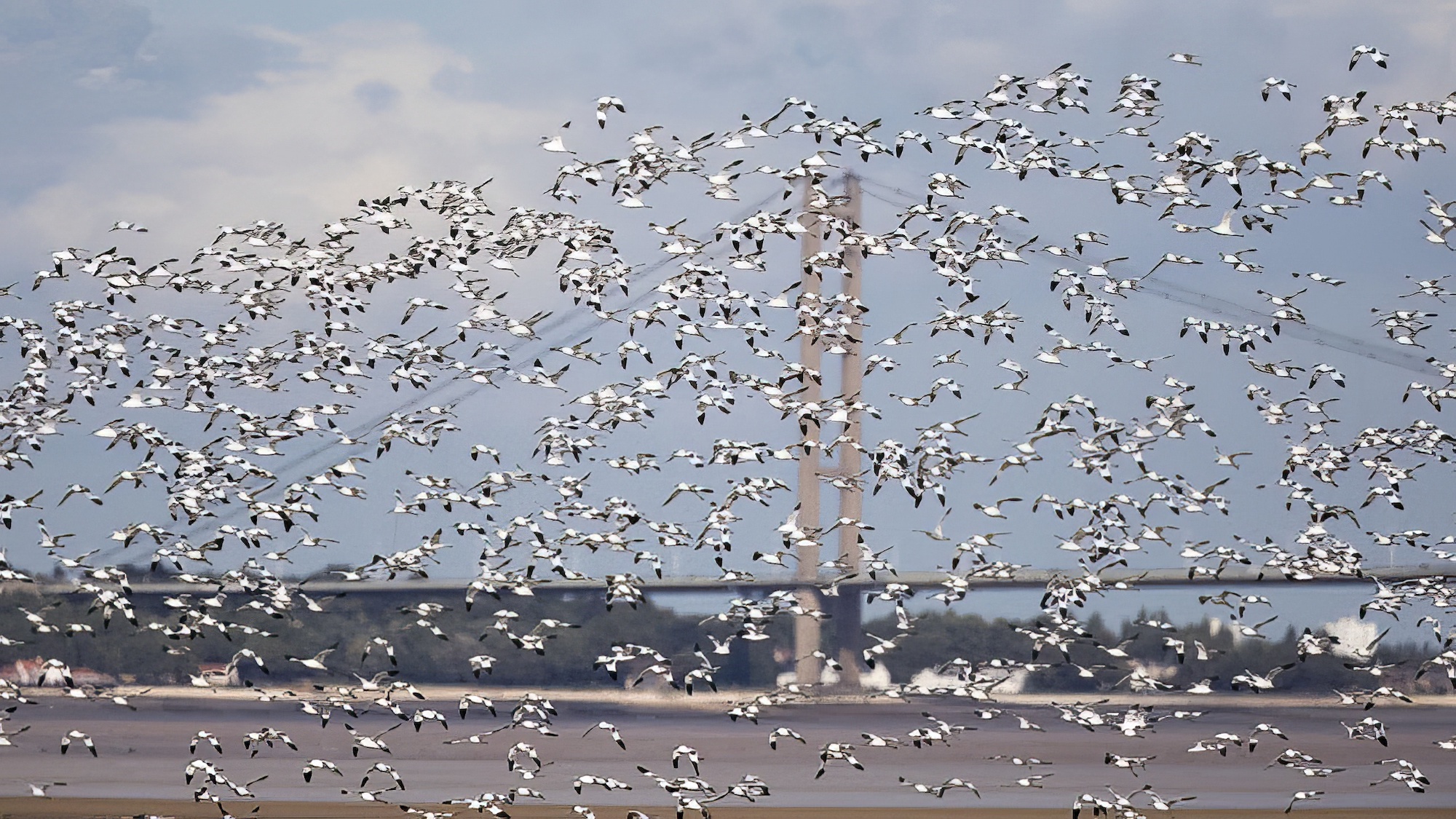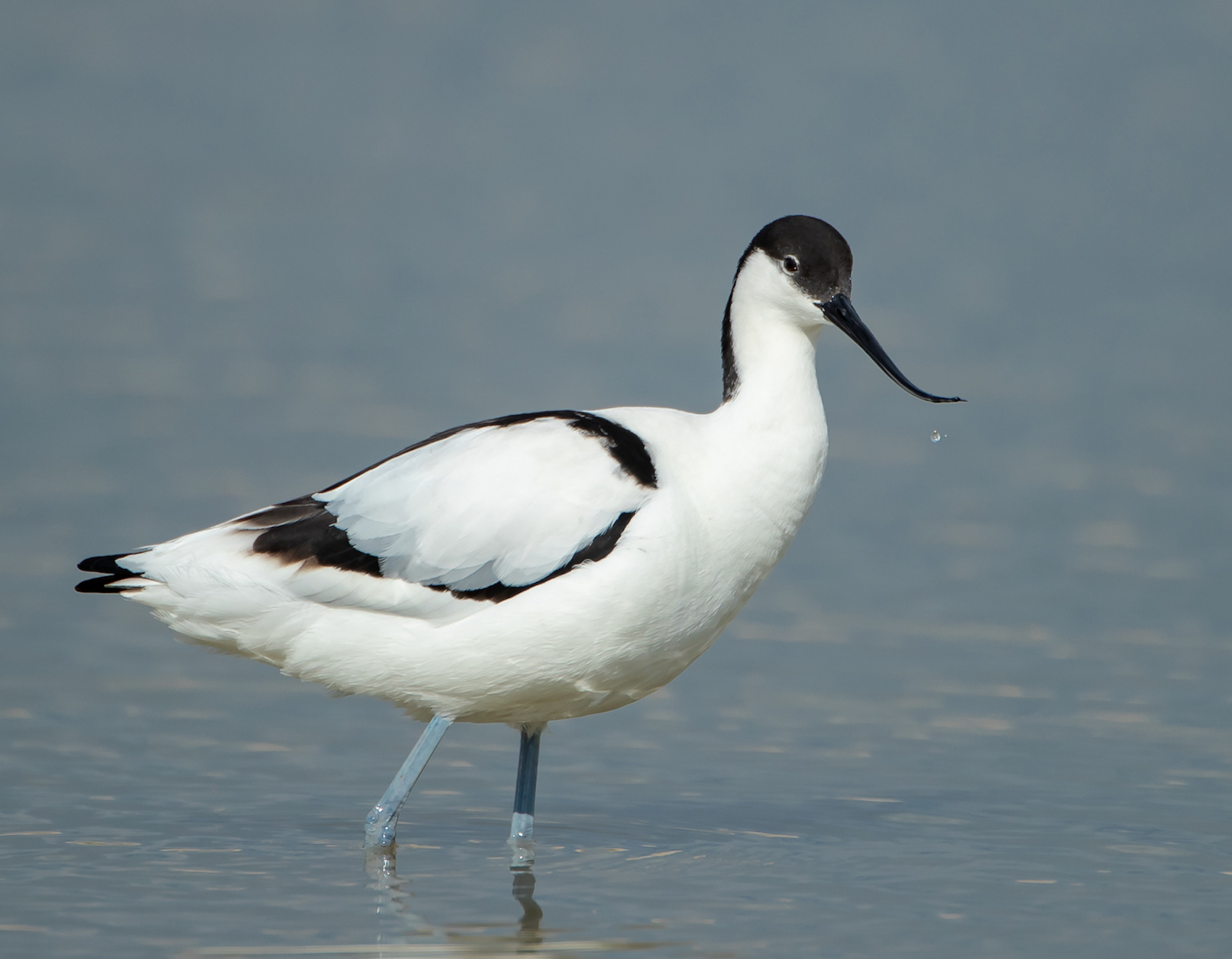Avocet Recurvirostra avosetta
Fairly common coastal breeder, has colonised inland localities in the past few years. Fairly common passage migrant, scarce in winter.



Bred in the fens around the Wash up until the early 19th century but disappeared as the fens were drained . Only five records in the first half of the twentieth century but became more numerous in the 1980s culminating in breeding again at Welland Marsh in 1991. Scrapes created by the RSPB at Read's Island on the Humber in 1997 proved successful and held up to 250 pairs in 2010. The colony has now moved as silting up allowed foxes and badgers to access the island. RBBP records show an average of 246 pairs per year bred during the period 2013-2017. Numbers can vary from year to year as birds move around looking for the best breeding conditions. An analysis in LBR 2018 shows that in the 11 year period 2008 to 2018 birds bred at 28 different sites but only around 12 sites in each year. The wintering population is increasing with up to a 100 birds in recent years.
(Account as per new Birds of Lincolnshire (2021), included September 2022)
